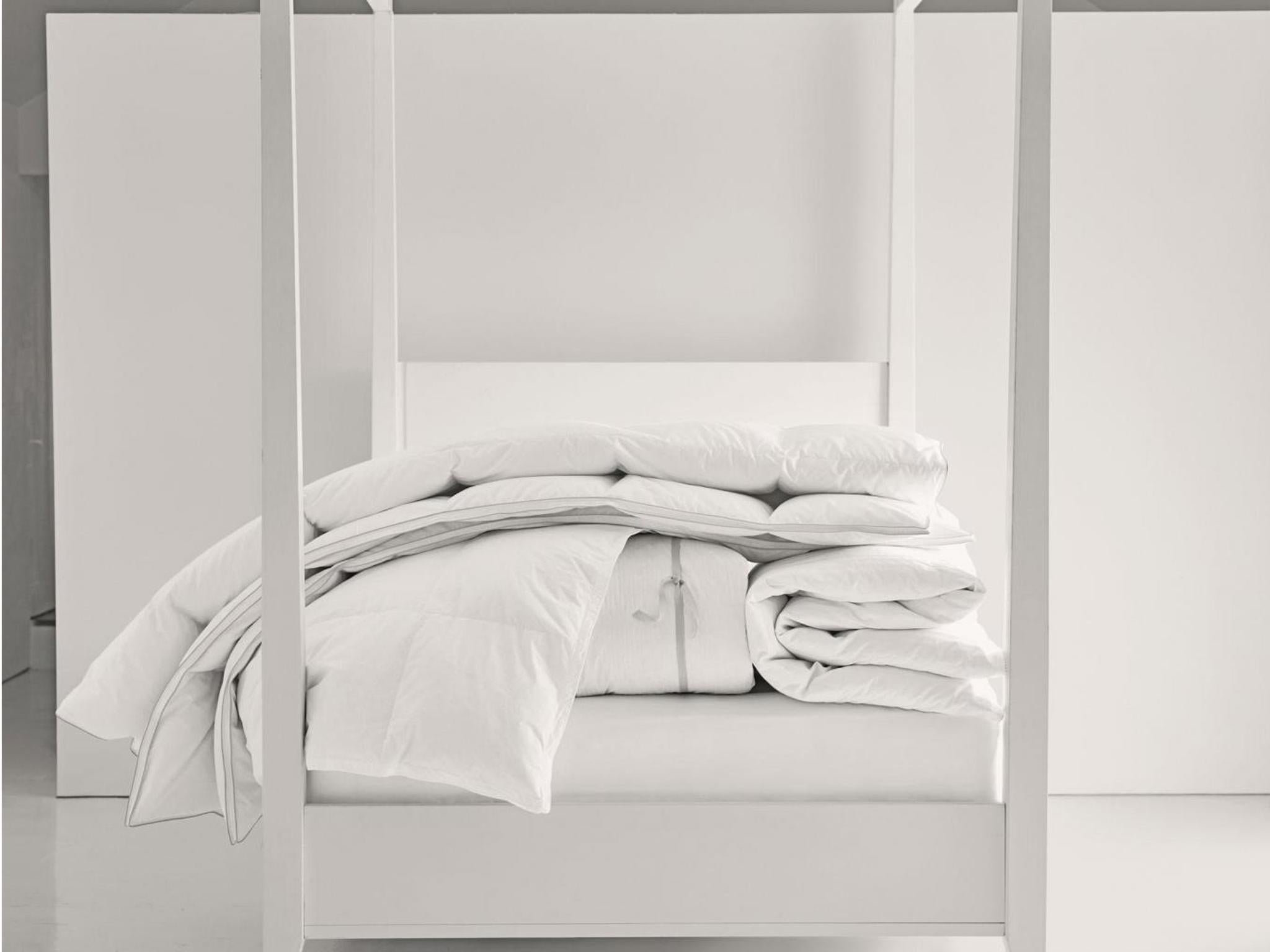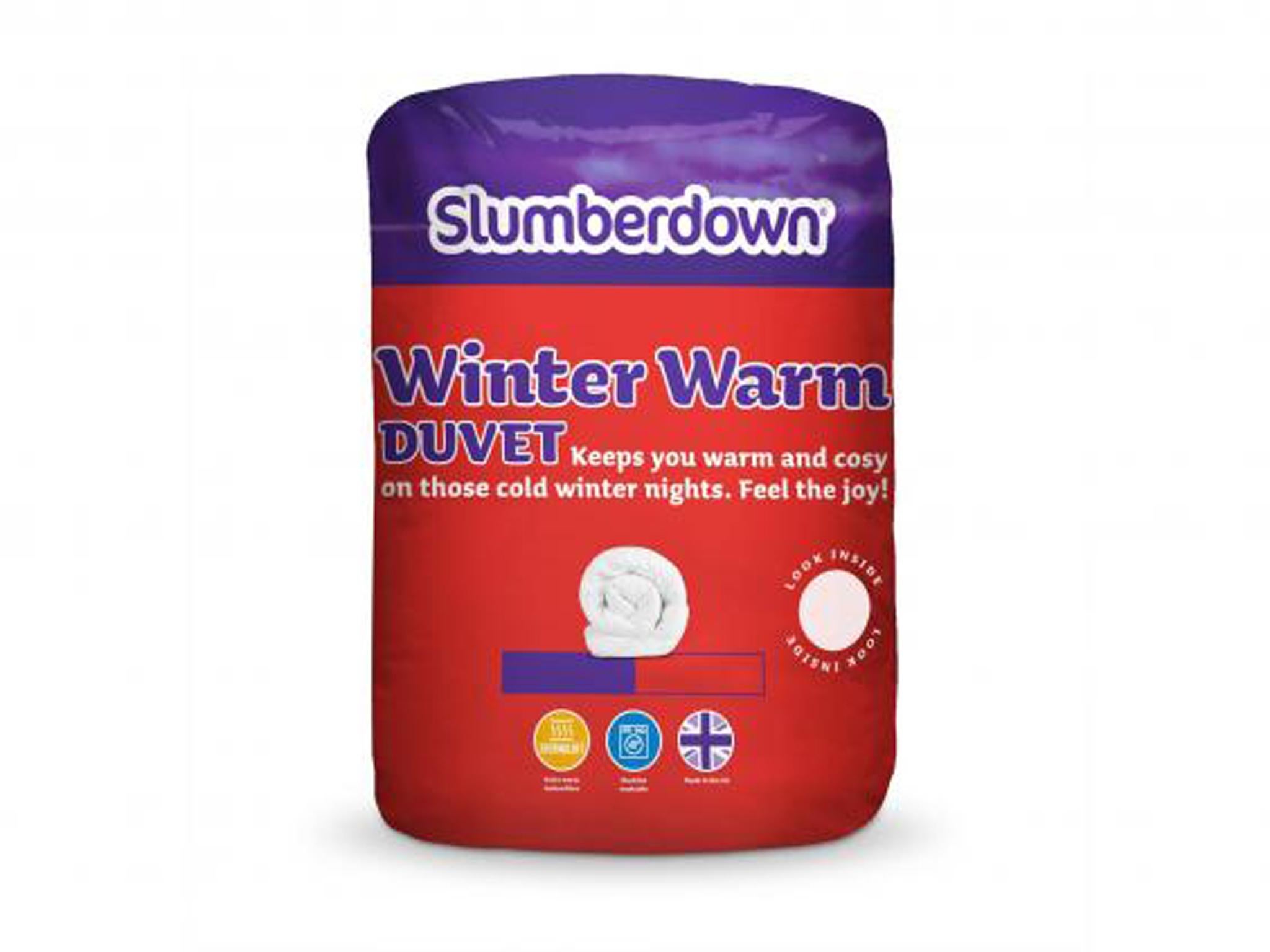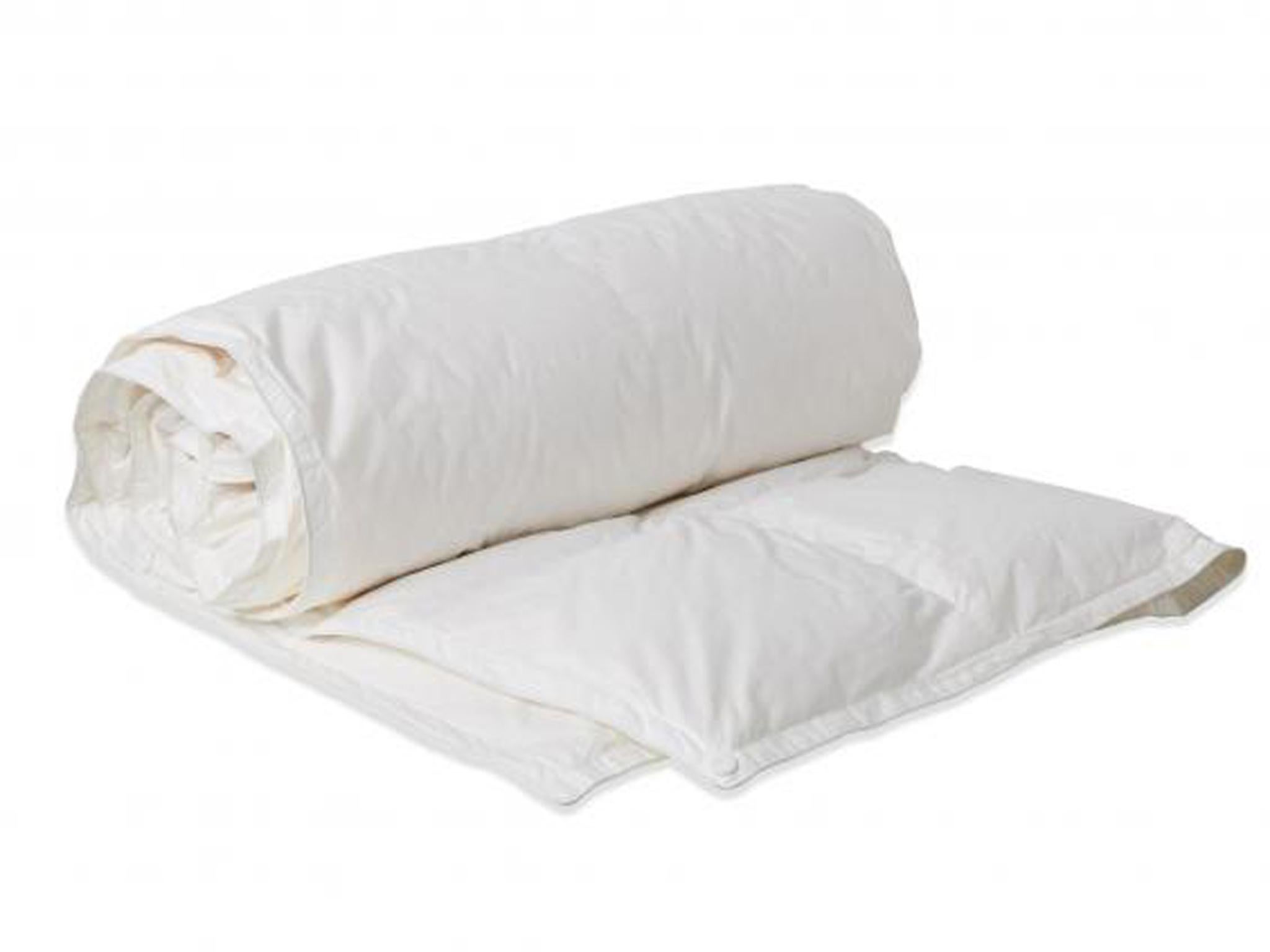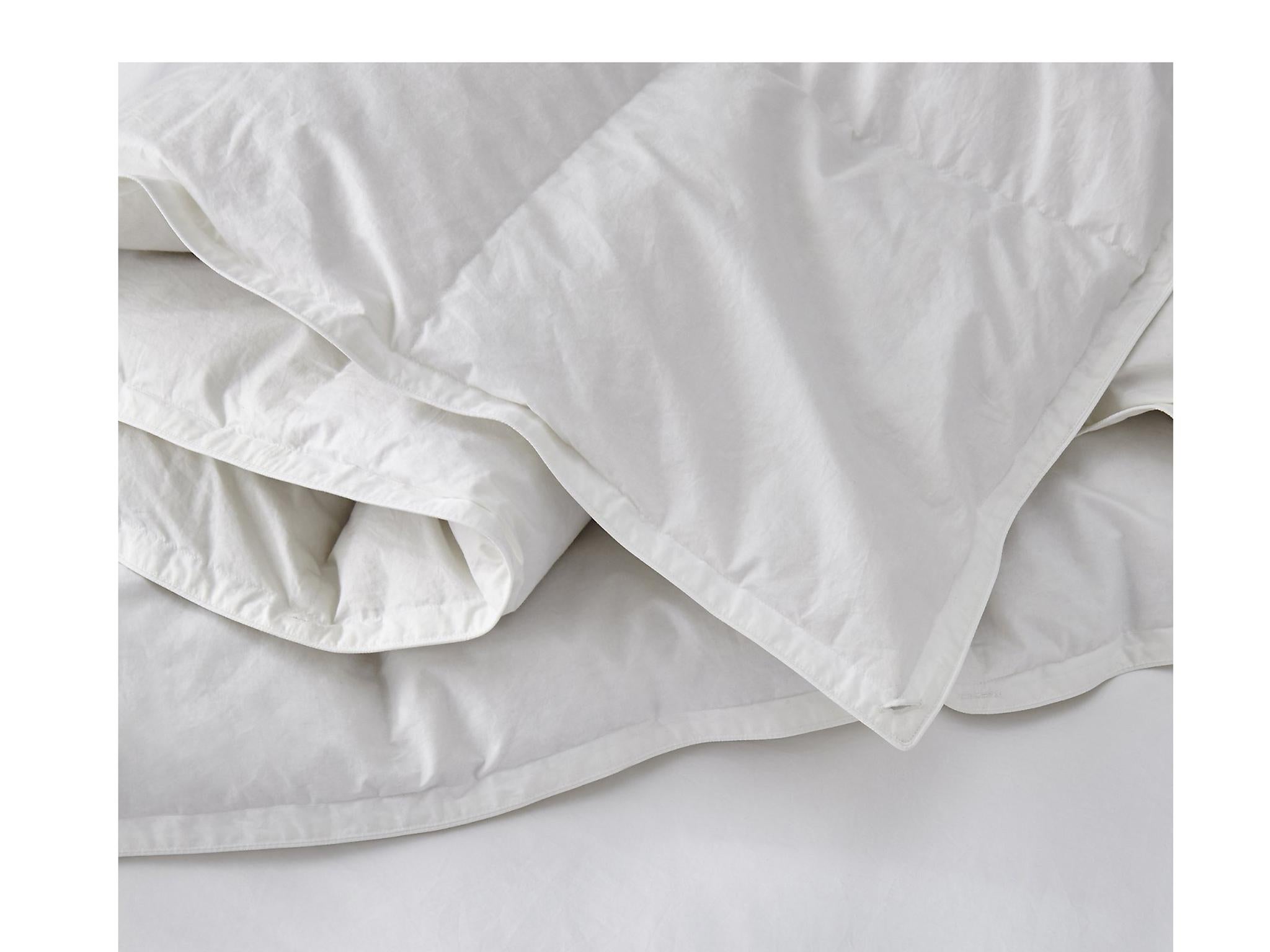The Independent's journalism is supported by our readers. When you purchase through links on our site, we may earn commission. Why trust us?
How to choose a duvet: Find out what tog, filling and size is best for you
Struggling to pick between a feather and hollowfibre filling? Not sure how to clean your duvet? Read our guide to buying and caring for your bedding

Your support helps us to tell the story
From reproductive rights to climate change to Big Tech, The Independent is on the ground when the story is developing. Whether it's investigating the financials of Elon Musk's pro-Trump PAC or producing our latest documentary, 'The A Word', which shines a light on the American women fighting for reproductive rights, we know how important it is to parse out the facts from the messaging.
At such a critical moment in US history, we need reporters on the ground. Your donation allows us to keep sending journalists to speak to both sides of the story.
The Independent is trusted by Americans across the entire political spectrum. And unlike many other quality news outlets, we choose not to lock Americans out of our reporting and analysis with paywalls. We believe quality journalism should be available to everyone, paid for by those who can afford it.
Your support makes all the difference.We spend about one third of our lives asleep so it makes sense to invest in bedding that will keep you warm and comfy to ensure sleepless nights are kept to a minimum.
There are plenty of duvets to pick from, ranging from around £20 to over a hundred. But with tog ratings, fillings and size to think about, make sure you know what you want before you part with any money.
To help, we’ve explained everything you need to know, including what type to get for the kids and how to keep your duvet clean. Don’t forget to invest in a good set of pillows and a quality mattress too, then you’ll be sleeping soundly every night.
Tog ratings
When buying a duvet you’ll want to know how warm it will keep you, especially in winter, so it’s important to find out its tog rating. You’ve probably seen it splashed across duvet packaging already, as it refers to how well the duvet is able to trap warm air around you and therefore keep you insulated at night.
The scale ranges from 1 tog (the coolest) to 15 tog (the warmest). For summer, you need a 1-7 tog duvet, whereas 10.5 tog or above is ideal for winter. Buying multiple duvets may not be realistic though, so getting around a 10 tog duvet to use all year is a good compromise. There are all-season options available too, but there’s more on this type later.
And remember, the weight of the duvet does not relate to its tog rating. Duvets filled with feathers or down naturally have better thermal properties than synthetic versions. This means you don’t need as much filling to achieve the same rating, often making them lighter.
Silk duvets can’t be measured by tog so they’re measured in grams of silk per square metre (gsm). Roughly, a 250gsm filling is the same as a 2-4 tog rating, 400gsm is about a 7-9 tog rating, while 600gsm is equivalent to 10-13 tog.
You can trust our independent reviews. We may earn commission from some of the retailers, but we never allow this to influence selections, which are formed from real-world testing and expert advice. This revenue helps us to fund journalism across The Independent.
Duvet fillings
There are two types of filling when it comes to duvets: natural and synthetic. Opt for a synthetic duvet if you suffer from allergies, while natural duvets are lighter but still equally as warm.
Natural fillings
Natural duvets are soft and allow your skin to breathe more easily compared to synthetic materials. They are usually filled with either feather (duck or goose) or down.
Down-filled duvets: Normally made with fluffy feathers from the breast area of the bird, they are usually lightweight and offer the best level of warmth. Hungarian, Swedish or Canadian down are popular options because the down from these chilly locations is naturally designed to keep warm in extremely cold weather.
Feather-filled duvets: Usually less expensive than down options but heavier, as the feathers are larger, stronger and more robust.
Feather and down-filled duvets: A mix of the two means both tough feathers and warm down are used to give the ideal level of weight and warmth.
Silk: This is a great option for those who suffer from allergies but still want a natural filling. It’s lightweight, durable, hypoallergenic and regulates your body temperature by trapping warm air next to you in the cold and drawing it away from you when hot. It can even cope with the washing machine and tumble dryer.
Wool: Another natural alternative, wool is great at trapping air because of its chunky structure. And as well as being naturally hypoallergenic, it helps regulate body temperature by wicking away excess heat and moisture when necessary.
Synthetic duvets
Synthetic (also called non-allergenic) duvets are great options for those who are allergic to feathers, down or dust mites as they are often hypoallergenic. The synthetic fibres also wick away sweat and can be washed much more regularly than natural fillings. They can be categorised as hollowfibre or microfibre.
Synthetic fillings
Hollowfibre: The duvet is filled with hollow fibres so it can easily trap warmth, but they’re thicker and more wire-like than microfibre. These options are hardwearing and often coated with an anti-allergy treatment.
Microfibre: Extra fine fibres are used to create a high-quality duvet that feels as luxurious as natural down options. They’re also lighter than feather-filled duvets.

How is a duvet made?
If you want to get really technical, duvets are made via box stitch or baffle box. Box stitch is when the duvet is sewn together in a criss-cross pattern, which forms lots of small boxes. Each box has an equal amount of filling in, meaning it’s evenly distributed across the duvet and there are no cold spots.
Baffle boxes aren’t much different apart from they are cubes (instead of boxes) and are created by sewing extra strips of material between the top and bottom layers of the duvet. This construction increases the volume of the structure so there’s more room for the filling to trap air and warmth. These are often used for higher tog duvets and are generally more expensive.
Types of duvet
Summer-weight duvets: In summer you want a lower tog rating. This is because the higher temperatures mean you won’t need as much insulation. Opt for anything less than 7 tog to keep cool and get a good night’s sleep.
Winter duvets: As the cold weather hits, nights get cooler and you’ll want to feel cosy in bed with a warmer duvet. Go for 10.5 tog or above to keep the chill out.
All-season duvets: These cater for every climate by providing two duvets in one. You will get a low tog and slightly higher tog option, say 4.5 and 9, to use in summer and spring/autumn respectively. You can then fasten them together using the button features to create a 13.5 tog duvet for winter. It also means you have a spare duvet for most of the year, which comes in handy for any house guests.
Duvet sizes
- Cot bed: 120cmx150cm
- Single: 135cmx200cm
- Double: 200cmx200cm
- King: 230cmx220cm
- Super King: 260cmx220cm
- Emperor size: 290cmx235cm

Duvets for children
Duvets are not suitable for children under 12 months old as it can lead to overheating and suffocation. There are special cot quilts and blankets available for this age instead.
For toddlers, their first duvet should be light (3-4.5 tog) leading up to 7.5-9 tog as they grow. Until the age of 10, do not exceed a 10.5 tog rating. This is because the duvet will trap more air around your child’s smaller body and therefore keep them warmer at lower ratings.
As your little one grows, gradually increase the tog count and allow them to regulate their own temperature by leaving a blanket on the bed for them to use if needed.
How to clean your duvet
Aim to wash your duvet every four months, but always check the label first as most natural duvets will be dry clean only. If it’s suitable for the washing machine and there’s a specific stain that needs removing, shake the filling away from that area and apply a mild detergent before you load it into the drum. Make sure there’s enough space within the machine for the duvet to fit in first though.
Use a normal spin setting to wash and allow your duvet to air afterwards until it’s completely dry. Then, run a warm iron over it to remove any remaining bacteria.
You can help keep your duvet clean for longer though by investing in a duvet protector or liner. These zip up over the duvet to keep it fully enclosed and prolong its life, as well as protecting those who suffer from allergies. Waterproof bedding protection is also available if you’re looking for a child and want to protect against accidents.
Duvet reviews
Here's a selection of our top-pick duvet reviews.

1. Slumberdown Winter Warm 15 Tog Duvet: From £21.99, Argos
- Non-allergenic, hollowfibre duvet (made from spun polyester)
- 15 tog, making it ideal for cold winter weather
- Affordable
- Warm and snug with a good drape
- Easy to wash but still maintains quality
- Available up to king size
2. Soak & Sleep Luxury Duck Down Duvet: From £94.50, Soak & Sleep

- 60 per cent duck down and the rest feather
- Extra warm with a snug feel
- All-season option available
- Ethically sourced feathers
- Good for those who are prone to sweating as allows body to breathe
Find out more about winter duvets
3. The White Company Goose Feather and Down Summer Duvet: From £50, The White Company

- Ethically sourced and hand plumped
- Remains evenly distributed after years of use
- Been treated for house mite for allergy suffers
- Available in single to super king sizes
- Comes with button holes and cufflinks so you can join two duvets together in winter
Find out more about summer-weight duvets
Voucher codes
For the latest discounts on beauty and make-up buys, try the links below: